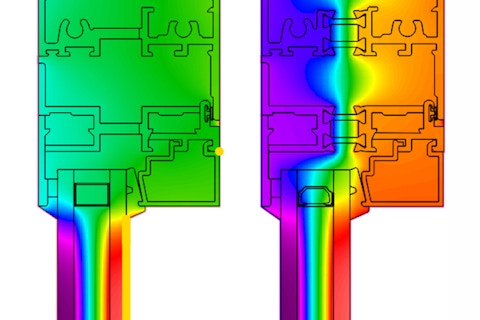Simulation vs. reality: FTI Forum recap
The Simulation vs. Reality Forum proved to be the most popular yet hosted by FTI, in person or virtual, emphasizing the importance and sensitivity of this topic in our professional work and its impact on the built environment. We are grateful to our speakers and moderators who so eloquently shared their experience and perspective, and our engaged audience, demonstrating their commitment to the industry and general public. This edition of SKINS is dedicated to, and extends the discussion on, the topic of energy simulation vs. reality with the aspiration to create positive change. In advance, FTI would like to thank our key contributors to the Forum for all their efforts:
Ajla Aksamija - University of Massachusetts Amherst
Alex Blue - Evoke
Christian Cianfrone - EllisDon Corp
Elliot Glassman - WSP USA
Duane Jonlin - City of Seattle
Steve Kemp - RDH Building Science
Nico Kienzl - Atelier Ten
Ivan Lee - Morrison Hershfield
Ruth McClung - Morrison Hershfield
Stephen Montgomery - PCL Constructors Canada
Christian Oberdorf - Transsolar KlimaEngineering
Lori O’Malley - PCL Constructors Canada
Antoni Paleshi - WSP Canada
Helen Sanders - Technoform North America
So, what did the Forum cover?
The gap between simulated and actual energy performance has hobbled progress towards important carbon reduction goals in buildings and urban habitat. The forum advocated for improved energy modeling and the development of best practices, with an emphasis on the critical role played by the building façade. Current energy modeling practices have stifled innovation and advancement in the facade industry by under-representing the impact of the facade system on energy efficiency and creating artificially high pay-back requirements and return on investment periods for facade system improvements.
Christian Cianfrone with EllisDon provided context to the following themed sessions with an insightful opening keynote address entitled Mechanical Design and Energy Optimization.
Session 1 focused on process, and the key steps in energy modeling needed to increase accuracy and properly account for the performance of the façade system. The limitations of past practices provided a reference and emphasized the importance of early-stage parametric modeling as a strategy to rapidly identify key factors driving the performance of different design options. The panelists discussed new metrics that help focus design on the elements that drive environmental conditioning, such as TEDI, a more appropriate metric for energy performance than the more familiar EUI. The checks and balances required to ensure accuracy of results were emphasized.
Session 2 investigated the tools available to leverage emerging best practices for advanced energy modeling. It emphasized that accuracy depends on the quality of inputs, and how the effective communication of results impacts the decision making process. Panellists discussed some of the available tools that allow stakeholders to review different scenarios in real time and enhance the efficacy of parametric modeling. Best practices for the accurate accounting of thermal bridging on façade performance were also explored.
Session 3 addressed the critical need for performance measurement and verification for meeting or exceeding design objectives. The intent is to correlate simulated design performance with the constructed reality, but there are challenges associated with how this relationship is measured. The execution of design requires implementation of a broad-based and rigorous commissioning process for quality control and post-occupancy monitoring. The discussion engaged the varying perspectives of the owner, consultant, and constructor, with a focus on managing expectations and delivering results.
If you missed the Forum presentations, recordings of the sessions are linked above and now available to all FTI members in the Video Library in the Resource section of the FTI website.
Let us know what you think! You can reach us at skins@facadetecontics.org.
Best regards to all,
Stéphane Hoffman, Morrison Hershfield
Hamid Vossoughi, WSP Canada
Guest Editors
Great thanks to our guest editors from all of us at
The SKINS Team:
Mic Patterson, Facade Tectonics Institute
Executive Editor
Val Block, Kuraray
Associate Editor
Brienna Rust, SGH
Christopher Payne, Gensler
Content Editors
Nick Carrillo, WWCCA
Event Calendar Editor
Alberto Alarcon, Kuraray
Event Calendar Editor

Stéphane Hoffman
Vice President Facade Engineering
Morrison Hershfield

Hamid Vossoughi
Senior Principal
WSP Canada
Looking for something specific?
Search our extensive library.
FTI’s SKINS email is the central source for the latest in building skin trends and research.
All emails include an unsubscribe link. You may opt out at any time. See our privacy policy.














